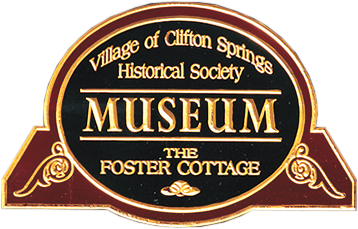Prehistoric Iroquois Settlement, Excavation at the Clifton Springs Site.
Robert A. Ricklis - Morgan Chapter
For three weeks during June, 1974 a class from the Community College of the Finger Lakes at Canandaigua, New York, carried out,
under the writer's direction, excavations at the Clifton Springs site (Plp 19-1).
The site has been known since at least the last quarter of the 19th century, yet very little has ever been reported, except that the site was a
prehistoric Iroquois settlement. The hillside middens have been dug over many times, but no controlled excavation has ever been carried out in
the village area proper.
The purpose of our work was to gain some knowledge of the settlement pattern within the village and to obtain an artifact sample which would
enable us to determine the site's relationship with other Iroquois settlements in the area, as well as shed light on the economy of this Iroquois group.
The site is located at an elevation of about 600 feet, just south of the village of Clifton Springs, on a narrow wooded promontory, about 1/4 mile west
of a small stream, Sulphur Creek, which flows into Canandaigua outlet a little over a mile to the north. The promontory extends approximately 500 feet
in an east-west orientation. At the eastern end the terrain drops abruptly about 60 feet to Sulphur Creek, while to the west the narrow hilltop narrows
to less than 15 feet across. The site is bordered by a 70 foot slope on the north and a 40 foot slope on the south, and was thus clearly chosen for its
defensive advantage.
Although traces of occupation are found alone the entire 550 foot length of the hilltop, only the western portion was intensively occupied, since it is
here, over an area of 220 by 160 feet, that cultural debris is found in significant concentrations. The scattering of potsherds and flint chips along
the eastern portion of the hilltop is most likely indicative of outdoor cooking and workshop areas, or at most, outlying structures of a temporary nature.
With the intention of exposing the house patterns, a grid o f ten foot squares was staked out in the village area. A total of 1400 square feet was
removed to the level of the yellow sand subsoil, exposing numerous post molds, hearths and pits.
On next page is a description of the various features with speculation as to their significance in the site's settlement pattern.


